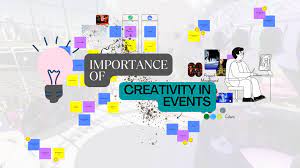We often take the ability to move freely and navigate our surroundings effortlessly for granted in our daily lives. Nevertheless, functional vestibular dysfunction can present formidable obstacles for even the most elementary of activities. Vestibular dysfunction pertains to pathologies affecting the vestibular system, an organ critical for regulating eye movements, balance, and spatial orientation. Individuals may manifest symptoms including dizziness, vertigo, imbalance, nausea, and visual disturbances in the event of a disruption in this system. Individuals with vestibular dysfunction can regain control of their lives and learn to manage their symptoms with the assistance of appropriate strategies and support. This blog post aims to examine coping mechanisms for vestibular dysfunction, encompassing adjustments to one’s lifestyle, rehabilitation methods, and emotional support. The ultimate goal is to assist affected individuals in navigating the realm of motion with increased assurance and comfort.
A Comprehension of Vestibular Dysfunction:
Situated in the inner ear, the vestibular system is comprised of the otolith organs and semicircular canals, which detect linear and rotational motion, respectively. These anatomical regions transmit impulses to the brainstem and cerebellum, where they are combined with visual and proprioceptive data in order to regulate equilibrium and spatial cognition.
Vestibular dysfunction may arise due to a multitude of factors, encompassing benign paroxysmal positional vertigo (BPPV), inner ear infections, head trauma, vestibular neuritis, Meniere’s disease, and vestibular migraine. Irrespective of the etiology, vestibular dysfunction can significantly impair an individual’s capacity to carry out routine tasks, thereby compromising mobility, autonomy, and overall well-being.
Strategies for Coping with Vestibular Dysfunction:
1. Lifestyle Adjustments:
- Mitigating Triggers: Recognize and abstain from exposure to visually stimulating environments, abrupt head movements, bright lights, crowded spaces, and other stimuli that can worsen symptoms.
- Consistently Maintain a Routine: To promote overall health and well-being, adhere to a consistent sleep schedule, consume well-balanced meals, and participate in light exercise.
- Stay Hydrated: Dehydration can exacerbate symptoms of imbalance and dizziness; therefore, consume copious amounts of water throughout the day.
- Modify Activities: Alter or restrict activities that necessitate swift head movements, including but not limited to driving, engaging in sports, or utilizing virtual reality devices.
- Establish a Secure Environment: To mitigate the potential for falls and injuries, eliminate obstacles such as unnecessary belongings, untidy areas, and uneven groundwork.
2. Various Rehabilitation Methods:
- Vestibular PT: is a specialized form of physical therapy that aims to enhance vestibular function, reduce dizziness, and improve balance. It consists of a series of maneuvers and exercises that are customized to the symptoms and needs of each individual.
- Canalith Repositioning Maneuvers: Canalith repositioning maneuvers, such as the Semont maneuver or Epley maneuver, have the potential to assist individuals with BPPV in the process of relocating displaced otolith crystals from the inner ear. This can result in resolution of vertigo and restoration of balance.
- Gaze Stabilization Exercises: The primary objective of gaze stabilization exercises is to reduce visual disturbances caused by vestibular dysfunction and enhance eye movement control. Engaging in these drills requires the ability to track moving objects, sustain concentration despite head movements, and execute seamless pursuits and saccades.
3. Emotional Assistance:
- Support Seeking: For emotional support and understanding, reach out to family, friends, or support groups. Engaging in the exchange of personal experiences with individuals who have encountered comparable obstacles can provide validation and empowerment.
- Engage in Stress Management: Acquire knowledge of stress management techniques that reduce anxiety and promote relaxation, such as progressive muscle relaxation, deep breathing, and mindfulness.
- Cognitive Behavioural Therapy (CBT): By assisting individuals in the development of coping mechanisms and the modification of negative thought patterns linked to vestibular dysfunction, CBT can contribute to enhanced emotional well-being and resilience.
4. Supportive Equipment:
- Mobility Aids: Mobility aids, including canes, walkers, and wheelchairs, should be contemplated in order to enhance stability and mitigate the risk of falls during walking or general movement.
- Hearing Aids: Auditory aids have the potential to enhance communication and improve the overall quality of life for individuals who have hearing loss due to vestibular dysfunction.
5. Pharmaceuticals and Medical Procedures:
- Medications: To alleviate symptoms, medications such as vestibular suppressants, antiemetics, or migraine preventatives may be prescribed, contingent upon the underlying cause of vestibular dysfunction.
- Surgical Interventions: For severe or refractory vestibular dysfunction, surgical interventions such as endolymphatic sac decompression or vestibular nerve section may be considered.
In Closing,
Although vestibular dysfunction presents its own set of unique obstacles, individuals can learn to manage their symptoms and lead fulfilling lives with the assistance of appropriate coping mechanisms and support. Through the implementation of lifestyle adjustments, engagement in rehabilitation initiatives, pursuit of emotional support networks, and investigation of assistive technologies and medical interventions, individuals can more effortlessly and assuredly navigate the realm of motion. Should you or a loved one be experiencing vestibular dysfunction, it is strongly advised that you promptly consult a healthcare professional for assessment and direction. By applying a multidisciplinary approach, exercising patience, perseverance, and determination, one can surmount the obstacles associated with vestibular dysfunction and reestablish agency over their life, click here to learn more.
















Leave a Reply